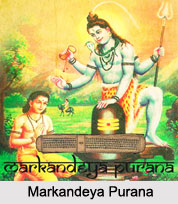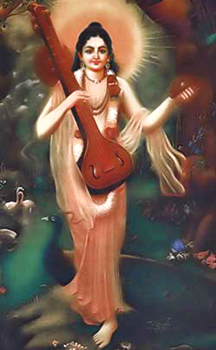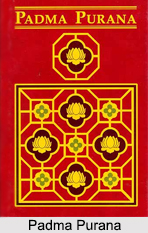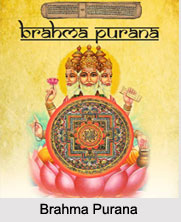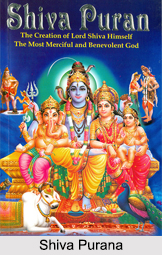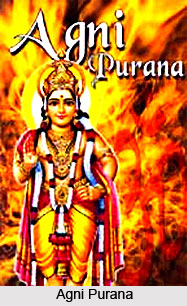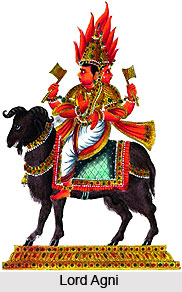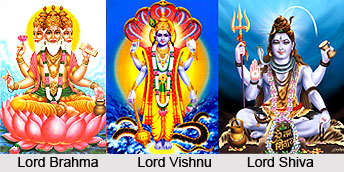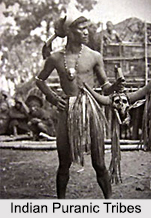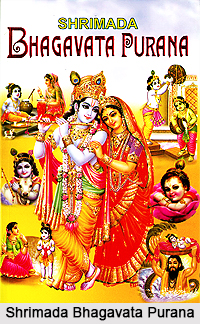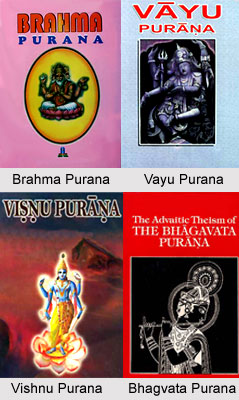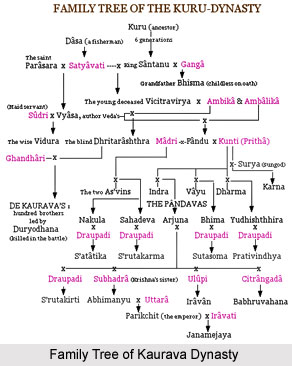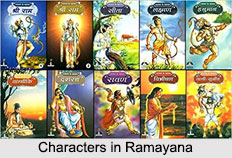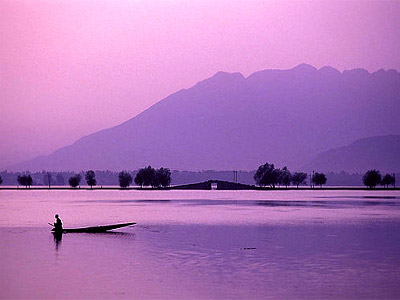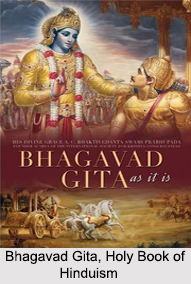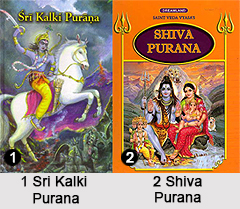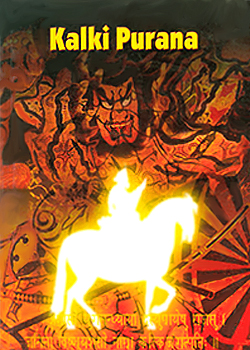The principal political development of this age was the growth of kingdoms of appreciable territories in substitution of small kingdoms that existed during the Vedic Age. There were kingdoms comprising more than one `Jana`. Powerful emperors like Raghu of Inchhanku dynasty had subjugated several kingdoms. These empires of `Janapadas` were generally ruled by hereditary sovereigns. Names of some of these kingdoms were Kasi, Videh, Magadh Panchala etc. As the focus of social, political and religious life used to be the capitals, scholars have compared them with the `city-states` of Greece. There were a vast count of kingdoms. There were also republics, which were generally of two kinds- Gana (individual republic) and Samghata-gana (confederation of republic). There is a mention that Lord Krishna was voted the President of Samghatagana, consisting of republics of the Yadavas, Kukuras, Bhojas, Andhakas and Virishnis. A want of unity, jealousy and disagreements were some of the chief difficulties in the smooth functioning of these republics.
The political condition may be further studied under the following heads:-
Origin of the State- In Mahabharata, lots of material are available in respect to the origin of State. In Shanti Parva of Mahabharata, it is delineated that there existed a Kingless, Classless society. The couplet in Shanti Parva runs thus -
"However the situation did not persist long. People turned away from their duties and then prevailed a darkness. At this juncture the Gods approached Brahma and then Brahma created a Nitisashtra (code of laws) and a man to govern according to those laws in this manner the king and the state came into existence. The people also bowed before this arrangement and that one man was allowed to govern only on this condition that he will rule according to law and justice".
King-As already mentioned, predominately hereditary monarchies prevailed. However, republics also existed. Even the administration of the republics was normally in the hands of men of Royalties. Though the kings of these times were mostly a hereditary sovereign, yet he was not total tyrant. He was restricted to rule in conformity with the ideologies of honesty and integrity. People were entitled to select a new king. In Mahabharata it is written, "that person should be considered as king who keeps in view the welfare of his people". He is the custodian of his subjects. In Mahabharata there is citation that the emperor should be assassinated who tyrannises the people pointlessly. Kings like Vaisha, Nahusha, Sumokha and Nimiete were tormenters and therefore they were assassinated by their subjects. It was also the responsibility of the king to act according to the predominating religion and traditions. In fact, the greatest check upon the powers of the king, was that of `Dharma` or religion. Besides, he was also duty-bound to comply with the laws of the land. Moreover Mantri Parishad was also an essential check upon his powers. According to Dr. R. K. Mookerjee, "The king`s autocracy was checked by popular bodies, the `Mantri Parishad` (Council of Ministers) and the `Sabha` (Assembly of people)". At the time of his enthronement, the king used to take a swearing that he will forever be truthful to his subjects and will work for their well-being and improvement. However, in affairs of war and peace, he was entitled to take autonomous decisions after consulting the associated and friendly kingdoms.
Imperialism and Relations with Conquered Kingdoms-
A noteworthy disposition of the kings of this era was to conquer as many kingdoms as possible and thus build up a gigantic empire. They considered it indecent of the Aryans to annihilate the enemy wholly. The design of the kings was to turn `Sarvabhaumi` or `Chakravarti`. Hence they carried out Ashvamedha Yajna or the horse sacrifice. King Yudhishthira did not demolish other kingdoms or kings, but submitted them to admit his overlordship or dominion. Similarly Ram, after killing Bali, made Sugriva the king and appointed Angad, son of Bali, as `Yuvraj`. Likewise, Ram made Vibishan the king of Lanka after killing Ravana. But places where certain Shudras or non-Aryans were ruling and trying to broaden their kingdom, were smashed and their kingdoms were usurped by the Aryan kings. One the other side, the Shudra king, Jarasandh, was trying to lengthen his territories and was trying to devastate other realms. Therefore, Lord Krishna, with the assistance of the Pandavas, overpowered and wiped him out and made Yudhishthira their ruler.
`Mantri Parishad` (The Council of Ministers) and other Officials-The king ruled with the help of his Council of Ministers. Besides the Council, he also sought the help of aristocrats and other functionaries who were under him. The diversified heads of the department were referred to as the Mantri, Purohita, Chamupati, Dvarapala, Karagaradhikari, Yuvraja, Nagaradhyaksha, Durgpala, Sbbhadhyaksha, Dandapata, Dharamadhyaksha etc.
The least division of administration was `Grama or village and its chief was called `Gramani`. For the governance of ten villages, there was `Dasgrami`, for twenty `Pimsapatipa`, for hundred villages `Satagrami`. Above this, `Adhipati` was in charge of thousand villages. These officers gathered taxes and were answerable to their higher officers, above all being answerable to the king.
Purohita-Purohita was a very erudite person. He acted as the adviser of the king and occupied an elevated position in the society. It is known from the Ramayana that Purohits of Kasi and Kosal were highly venerated. But in other states like Panchala, Kuru, Matshya, the commanding officer of the army received more deference. Purohits depended upon kings for monetary assistance. They were not so mighty to go up against the king.
Administration of the Capital-Capitals were the focal point of the social, religious and political life of the Aryans of this period, hence great pains were taken to keep them organised and hygienic. There used to be plenty of gates and trenches were dug round the walls, built for the protection of the cities.
Origin of Federal System-The emperors of these kingdoms were very aspirational and after vanquishing the other kings, used to make them `Samanta` or federal lord. These lords were very loyal and could lay down their lives for their kings. However, these lords were not always Kshatriyas. For instance, Duryodhana had given away the States of Aang to Kama, who was called as `Sutputra`.
Organisations of the Army- There were four divisions within the army-infantry, cavalry, chariots and elephants. Massive armies were kept to shield the people from foreign assaults. Another reason for keeping huge armies was solely due to private ambitions of the kings. The Commander-in-chief used to be the in-charge of the entire army setup. The army men were regularly paid. Shudras were not enrolled in the army as daily-paid, to take arms. The post of Commander-in-Chief was normally given to an Aryan of royalty. Aryans of commonplace varna and non-Aryans comprised the infantry. People chose death rather than fleeing from the battlefield. The use of elephants was made for protective as well as unpleasant purposes. Archery had reached its peak during this period. Specific rules had been developed in agreement with which the battles were fought. Combating was considered a duty of the Kshatriyas and they chose death over fleeing from the battlefield. A soldier going down while defending was regarded going to heaven. The chief weapons were bow and arrow, sword, axe, etc. There is also reference to fire arms or missiles in the Mahabharata and `Vimans` in the Ramayana.
Sources of Income of the State-According to `Aitareya Brahmana,` the king was entitled to realise tax from the people and also take gifts from them. He earned this right in return of the safeguard which he furnished to the people. The seized states also had to pay taxes. The person who brought in land revenue was called `Gram Bhojak`. Another basis of income was from the forest. Moreover, taxes such as `Bali` and `Shulk` were also earned from the people.
Judicial System-The king was the highest judicial power and played a most substantial role in the dispense of justice. Local rules pertaining to races, families etc., were kept in mind while dispensing justice. The charged had to go through `fire tests` (Agni Pariksha) as is illustrated from the glorious instance of Sita.

